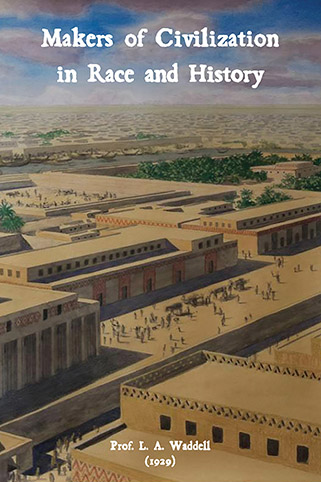Description
By Laurence Austine Waddell. Waddell presents an unabashedly pro-White stand on the origins of civilization. He delves into the rise of the Sumerians, who he believed were Aryans, their origins and propagation of civilization, their extension of it to Egypt and Crete, and the personalities and achievements of their kings.
He also discusses the historical origins of the Sumerian mythic gods and heroes, which date from the rise of civilization in the Fertile Crescent region about 3380 B.C.
All of this Waddell reconstructed from Babylonian, Egyptian, Hittite, Indian and Gothic sources. Many of the earliest books, particularly those dating back to the 1900s and before, are now extremely rare and increasingly expensive.
Sacred Mountain Press has rescued this classic work in a modern edition, using the original text and artwork. A profusely authoritative and well-illustrated work, it also discusses the Phoenician theory on British origins, supported by an imposing array of evidence.
Thanks to the publisher, this work recovers many epoch-making cultural heroes—with their long-lost real names and authentic records of achievements and exploits—and shows they were truly historical kings of fixed dates, who have left us many of their actual contemporary inscribed monuments, along with full lists of their early kings and dynasties.
Includes sections on: Mesopotamia, the First Dynasty of Egypt, the Gothic invasion, the Kish Chronicle, the Nordic Eddas, the Isin Chronicles, the Great Gap, the Kassi Dynasty of Babylonia and more. Includes 35 black-and-white plates, 168 illustrations and five maps.
Lt. Col. Laurence Austine Waddell was a British explorer, professor of Tibetan history, professor of chemistry and pathology, Indian army surgeon, collector of Tibetan artifacts and amateur archeologist. Waddell also studied Sumerian and Sanskrit; he made various translations of seals and other inscriptions. His reputation as an Assyriologist gained little to no academic recognition at the time, and his politically incorrect books on the history of civilization have caused controversy. He is regarded by some today as having been a real-life precursor of the fictitious character, Indiana Jones.
Softcover, 756 pages, illustrated


